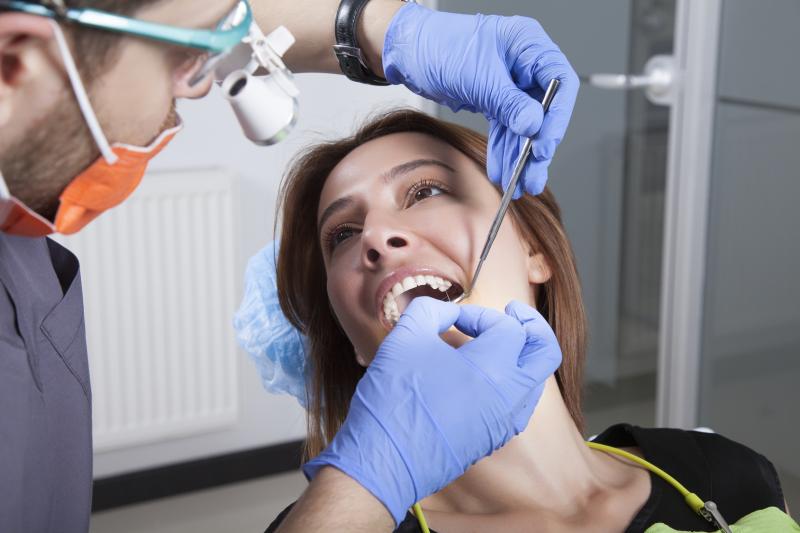Novel device boosts safety of dental procedures against COVID-19




 Gradually, dentists have moved to cosmetic dentistry where the big money lies – providing perfect teeth to those without major dental issues.
Gradually, dentists have moved to cosmetic dentistry where the big money lies – providing perfect teeth to those without major dental issues.A new, low-cost protective device can minimize aerosol dispersion in the dental setting and, when used in conjunction with standard personal protective equipment (PPE), may help limit the spread of SARS-CoV-2, the virus that causes the novel coronavirus disease (COVID-19), in clinics, a study has shown.
“[C]onsidering the remarkably high risks of infection by SARS-CoV-2 during dental practice, the use of this device may contribute to preventing the spread of the virus and help to control the pandemic situation,” the researchers said.
The study involved a dentist performing a simulated operation on a human mannequin positioned on a dental chair. The experiment was performed twice, once with the device, and once without. In both cases, a fluorescent dye was added to the water system of the dental chair and was used for the assessment of aerosol dispersion.
In simulations without the device, dye was observed all over the mannequin and on the dental chair. The dentist also saw high levels of exposure. Droplets were seen on the surgical gloves and on the chest, legs, and fist areas of the apron, as well as on the face shield. [Int Endod J 2020;doi:10.1111/iej.13373]
Notably, the dye was able to reach the dentist’s clothes under the apron, indicating a strong possibility of contamination. No such traces were reported for the operator’s cap and mask.
“In addition, without the device, the dye was observed in distant areas of the dental surgery, such as the light reflector and floor,” the researchers said. “These findings reinforce that standard protective measures in daily clinical work may not be effective enough to prevent the spread of SARS-CoV-2.”
In comparison, the simulation of the dental procedure using the device showed a marked decrease in aerosol dispersion. For instance, the dye was observed only on the surgical gloves and on the first area of the operator’s apron. There were also traces in the pipe system and the acrylic walls of the device.
While the device improved safety, it could also impede the operator’s movements and visualization, as reported by the performing dentist.
The device employed in the current study consists of a rigid, translucent acrylic body that acts as a physical barrier between the patient and the operator and is designed to fit in the dental chair. The body of the device should cover the patient’s head, neck, and chest. Three holes at covered with flexible, polyvinyl chloride (PVC) films allow the operator’s hands entry into the patient’s space.
The device also comes with a piping system that creates a negative pressure inside the system. Air suctioned from inside the acrylic body passes through an external box with an antiseptic solution before it is returned to the external environment.
“The present device represents a low-cost complementary resource to be used in conjunction with standard PPE to contribute to the prevention of transmission of SARS-CoV-2 in the dental settings,” the researchers said.
“Further clinical trials should be carried out to test the efficacy of this device to reduce aerosol dispersion and the consequent vector of contamination, as well as the ergonomic impacts related to the use of the device,” they added.